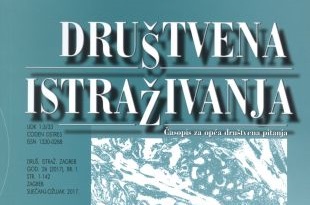A MODEL OF PEACEFUL REINTEGRATION AND THE POSSIBILITY TO LIVE TOGETHER
A MODEL OF PEACEFUL REINTEGRATION AND THE POSSIBILITY TO LIVE TOGETHER
Author(s): Antun ŠundalićContributor(s): Vesna Hajnić (Translator)
Subject(s): Military history, Evaluation research, Nationalism Studies, Inter-Ethnic Relations, Peace and Conflict Studies
Published by: Institut društvenih znanosti Ivo Pilar
Keywords: Living together; Peaeful reintegration; Croato-Serbian relationship;
Summary/Abstract: When differences in the language, religion, tradition and culture in general grow into an obstacle to the communication between nations, the possibility of living together becomes doubtful. The burden of historic heritage in the Croato-Serbian relationship has become intolerable due to Serbian rejection to recognise Croatian independence. Through violence, plunder, banishment and devastation of the Croatian villages and towns, the Serbs have declared against co-existence with the Croats. Can the Plan of Peaceful Reintegration convince the expelled Croats and other non-Serbs that living together is possible? The Plan offered administrative solutions that neglect essential characteristics of the area (historical prerogatives, migrations, wars, cultural differences). The displaced persons do not see the Plan as a humane, material and moral satisfaction, but rather as additional protection for the Serbs.
Journal: Društvena istraživanja - Časopis za opća društvena pitanja
- Issue Year: 6/1997
- Issue No: 28+29
- Page Range: 217-233
- Page Count: 17
- Language: English

